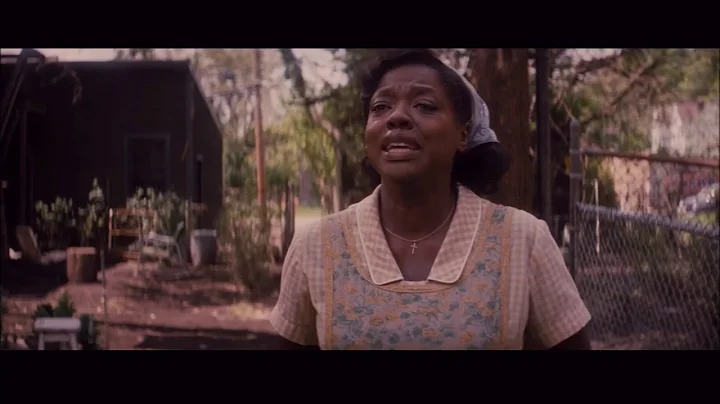Rose Mary Cory
age ~91
from Perryville, MO
- Also known as:
-
- Rose M Cory
- Randall S Cory
- Cory Cory
- Rachele Cory
- Richard Cory
- Cory Rachele
Rose Cory Phones & Addresses
- Perryville, MO
- Kent, WA
- Kiowa, CO
- Indianapolis, IN
- 878 Pcr 620, Perryville, MO 63775 • (573)6190555
Work
-
Position:Machine Operators, Assemblers, and Inspectors Occupations
Education
-
Degree:High school graduate or higher
Emails
Resumes

Rose Cory
view source
Rose Cory
view sourceFriends:
Tom Stockton, Erin Gottler, Suzanna Dupee, Corinne Lebrun, Gidget Green Guides

Cory Rose
view sourceFriends:
Barney Desira, Zoe Craig, Tracey Mep, Jeffrey Woodhouse, Douglas Moat

Cory Rose
view sourceNews

Sunlight controls the fate of carbon released from thawing Arctic permafrost
view source- "Our results suggest that sunlight, rather than biological processes, controls the fate of carbon released from thawing permafrost soils into Arctic surface waters," said aquatic geochemist Rose Cory, first author of the Science paper and an assistant professor in the U-M Dept. of Earth and Environm
- Date: Aug 22, 2014
- Category: Sci/Tech
- Source: Google

Sunlight, not bacteria, key to CO2 in Arctic
view source- "It turns out, that in Arctic rivers and lakes, sunlight is faster than bacteria at turning organic carbon into CO2," noted lead author Rose Cory, an assistant professor of earth and environmental sciences at University of Michigan.
- Date: Aug 22, 2014
- Category: Sci/Tech
- Source: Google

Sunlight spurs greenhouse gas release from Arctic
view source- The team, which also includes Kling, led by Rose Cory of the University of North Carolina, found that sunlight pushes up bacterial conversion of exposed soil carbon into CO2 by at least 40 percent, compared to unexposed carbon, the journal Proceedings of the National Academy of Sciences reports.
- Date: Feb 12, 2013
- Category: Sci/Tech
- Source: Google

Increased Melting and Slumping Soil Produce High Amounts of CO2, Tied to ...
view source- Every spring, water from massive amounts of melting snow floods the arctic plains. The water carries with it soil containing high amounts of carbon, which later on is oxidized by bacteria into carbon dioxide, says environmental scientist Rose Cory. This carbon from melting permafrost accounts to nea
- Date: Feb 11, 2013
- Category: Sci/Tech
- Source: Google

Arctic sunshine revs up greenhouse gases
view source- Rose Cory at the University of North Carolina at Chapel Hill and her colleagues, studying melting permafrost sites in the arctic, found the amount of CO2 released was 40 percent higher when the melt water was exposed to ultraviolet light than when kept dark, buried in the permafrost.
- Date: Feb 11, 2013
- Category: Sci/Tech
- Source: Google
Flickr
Myspace

How much lger!? (Cory Ros...
view sourceMyspace profile for Cory Rose. Find friends, share photos, keep in touch with classmates, and meet new people on Myspace.
Classmates

Rose Cory Springfield IL...
view sourceRose Cory 1973 graduate of Sacred Heart Academy in Springfield, IL is on Classmates.com. See pictures, plan your class reunion and get caught up with Rose and other high school ...

Sacred Heart Academy, Spr...
view sourceGraduates:
Rose Cory (1969-1973),
Cynthia Groesch (1967-1971)
Cynthia Groesch (1967-1971)

Pioneer Intermediate Scho...
view sourceGraduates:
Charles Dennington (1995-1999),
Christopher Parker (1989-1992),
Cory Rose (1982-1983),
Tera Underwood (1992-1993),
Billie Cotts (1965-1969)
Christopher Parker (1989-1992),
Cory Rose (1982-1983),
Tera Underwood (1992-1993),
Billie Cotts (1965-1969)

Denison High School, Deni...
view sourceGraduates:
Melvin Guy Forisha (1958-1962),
Janice Thomas (1967-1971),
Pam Ramey (1968-1972),
Howard Edwards (1954-1958),
Cory Rose (2001-2005),
Bambi Callahan (1975-1979)
Janice Thomas (1967-1971),
Pam Ramey (1968-1972),
Howard Edwards (1954-1958),
Cory Rose (2001-2005),
Bambi Callahan (1975-1979)

Park High School, Livings...
view sourceGraduates:
Cory Rose (1998-2002),
Lynn Madsen (1964-1968),
Jan Clayton (1974-1978),
John Shorthill (1965-1969)
Lynn Madsen (1964-1968),
Jan Clayton (1974-1978),
John Shorthill (1965-1969)

Orvis Risner Elementary S...
view sourceGraduates:
Christopher Hamilton (1988-1989),
Ginger Schultz (1980-1986),
Cory Rose (1978-1982),
Trisha Crawford (1975-1979),
Cherie Pendergraft (1974-1979)
Ginger Schultz (1980-1986),
Cory Rose (1978-1982),
Trisha Crawford (1975-1979),
Cherie Pendergraft (1974-1979)

Teague Middle School, Alt...
view sourceGraduates:
Sebastian Lozano (2004-2004),
Cory Rose (1984-1985),
Drake Terrrell (1998-2002),
Laura Taylor (1981-1984),
Barbie Gudenkauf (1982-1986)
Cory Rose (1984-1985),
Drake Terrrell (1998-2002),
Laura Taylor (1981-1984),
Barbie Gudenkauf (1982-1986)

Lake Brantley High School...
view sourceGraduates:
Celeste Emanuel (1998-2002),
Edwin Ortiz Jr (1994-1998),
Shannon Donnelly (1982-1986),
Cory Rose (1985-1989),
Christopher Diggans (1996-2000)
Edwin Ortiz Jr (1994-1998),
Shannon Donnelly (1982-1986),
Cory Rose (1985-1989),
Christopher Diggans (1996-2000)
Youtube
Get Report for Rose Mary Cory from Perryville, MO, age ~91













